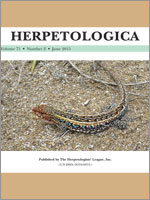We provide a well-supported phylogenetic hypothesis for all recognized lineages of the Liolaemus kriegi complex based on a multilocus dataset. We used 29 individuals from the eight taxa included in this complex for which we sequenced eight gene regions (two mitochondrial and six nuclear). We implemented maximum likelihood and Bayesian inference methods for the mitochondrial, nuclear, and concatenated sequences and employed BEAST to estimate the species tree. The all genes concatenated analyses and the species trees recovered the L. kriegi complex as monophyletic with high support, including three described species (L. kriegi, Liolaemus ceii, and Liolaemus buergeri) and three previously identified candidate species (Liolaemus sp. A, Liolaemus sp. C, and Liolaemus sp. D), with Liolaemus tregenzai as a closely related taxon. Another previously proposed candidate species (L. sp. B) has a labile topological position that varies depending on the type of markers and analytical methods used. In the mitochondrial gene tree, L. sp. B is recovered within the L. kriegi complex whereas in the “all genes concatenated” analyses and in the nuclear species tree analyses, it is recovered outside of this complex as sister to Liolaemus petrophilus (a representative of the L. petrophilus group). Morphologically, L. sp. B is indistinguishable from L. austromendocinus (also included in the L. petrophilus group); thus, we do not consider L. sp. B as part of the L. kriegi complex. We estimated divergence times for the major clades of the complex based on the species tree hypothesis, and all were inferred to have a Pleistocene origin.
How to translate text using browser tools
1 June 2015
Molecular Phylogeny of the Liolaemus kriegi Complex (Iguania, Liolaemini)
Cintia D. Medina,
Luciano J. Avila,
Jack W. Sites,
Mariana Morando
ACCESS THE FULL ARTICLE

Herpetologica
Vol. 71 • No. 2
June 2015
Vol. 71 • No. 2
June 2015
Concatenated gene tree
divergence times
lizard
Patagonia
species tree




